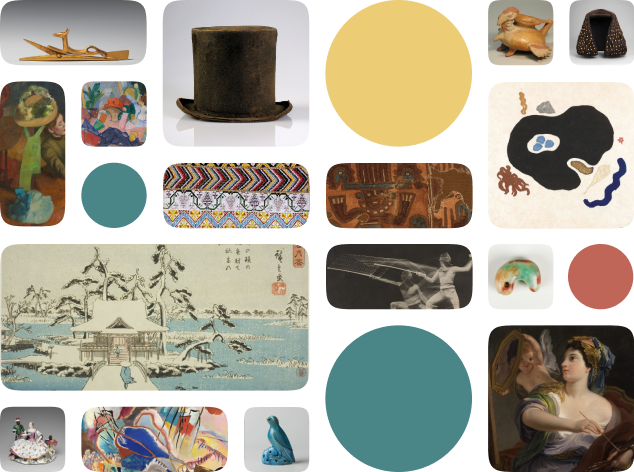About the work
In the 4th century BCE, Greek troops under Alexander the Great conquered Asian empires as far as current-day Pakistan. The resulting Hellenistic dynasties saw a great outpouring of art mixing Greek tradition with local styles. Artists of the Kushan Empire in Gandhara, syncretized local animist, Hindu, and Buddhist iconography with Greek and Iranian artistic styles, as shown in this figurine.
The artist who molded this fertility goddess clearly drew on a tradition that combined both registers, evidenced by its subject and composition. The full-body figure wears a laurel wreath which came to strongly symbolize triumph and protection for Greeks and Romans. Wreaths were usually present in funeral contexts.
The artist who molded this fertility goddess clearly drew on a tradition that combined both registers, evidenced by its subject and composition. The full-body figure wears a laurel wreath which came to strongly symbolize triumph and protection for Greeks and Romans. Wreaths were usually present in funeral contexts.
Cleveland Museum of Art Object Description
Female figures fashioned from terracotta were found at large man-made pools of water in early Buddhist sacred compounds. They indicate the importance of art and rites associated with fertility and childbirth among the Buddhist laity, of which women were a major component. The wreath, small breasts, and gentle modeling of her full-hipped body associate this figure with Greco-Roman imagery.
Work details
"--" = no data available
All Works in Curationist’s archives can be reproduced and used freely. How to attribute this Work:
.


